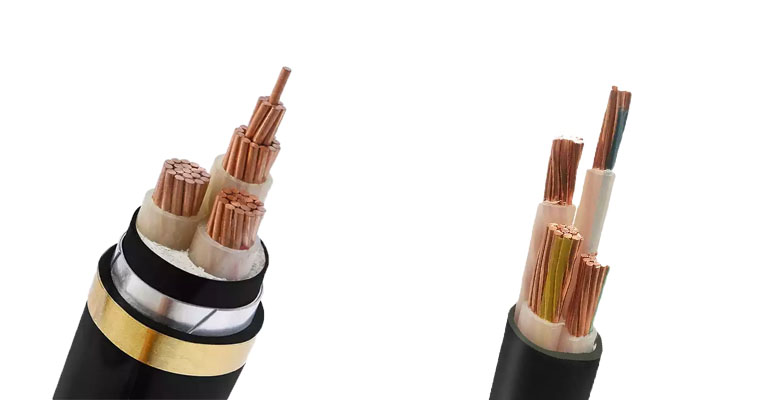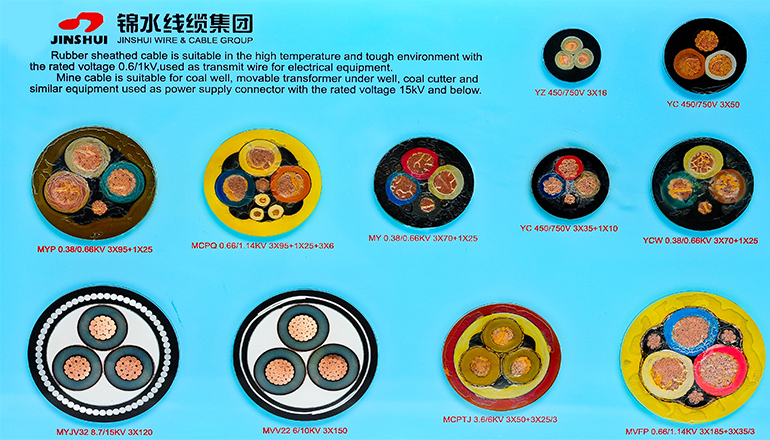- Offices Time:24 Hours Online
- Email:[email protected]
- WhatsApp:+8618339938759

Posted on December 30, 2022
Characteristics and application of flame retardant cables
In ordinary production and daily life, most of the cables we see or come into contact with are ordinary cables, but in some places that require high safety protection index, flame-retardant cables must be used. In fact, many construction teams or staff do not know much about the characteristics and structure of flame-retardant cables, which leads to the inability to choose the most suitable cables when purchasing. Therefore, it is necessary to understand the characteristics of flame-retardant cables and how to choose them.
Flame-retardant cable refers to a special cable that ignites the sample under certain experimental standards. When the experimental open flame is removed, the ignited sample flame only burns within a limited range, and the afterflame can be automatically extinguished within a certain period of time.
Flame-retardant cables maintain the characteristics of ordinary cables and are not easy to ignite, or when the cable catches fire due to its own reasons or other open flames, the cables will not continue to burn after the open flame is extinguished. These excellent fireproof properties.
The most fundamental feature is that in the event of a fire accident, it may be damaged and cannot operate normally, but it can prevent the fire from spreading outward. In other words, in case the cable catches fire, the fire area can be controlled within a certain range, and it is not allowed to spread outward, so as to minimize the damage.
The structure of the flame retardant cable is the same as that of the general cable structure, the difference is the fireproof material used in part of the raw materials it chooses.
Flame-retardant cables are divided into two categories:
1.Halogen-containing flame-retardant cables: all or part of the high-pressure polyethylene (PVC) fire-resistant materials with halogen elements are used in this type of cable raw materials, so they have excellent flame-retardant characteristics. However, there are also disadvantages, that is, when the cable catches fire, a lot of smoke and halogen acid gas are generated, and the halogen acid gas is corrosive to surrounding staff and other objects. Rescue workers need to carry gas masks with them before they can get close to the fire. Rescue on the spot.

2.Low-smoke flame-retardant cables without halogen elements: all or part of the raw materials of this type of cables are high-density polyethylene (XLPE) fireproof materials without halogen elements, which not only have excellent flame retardancy characteristics, but also When a fire occurs, it will not produce a large amount of smoke and halogen acid gas. However, its reflectivity and conductivity are worse than ordinary cables. Along with the continuous development trend of society, flame retardant cables have gradually changed from the flame retardant of halogen bulbs in the past to the low-smoke and halogen-free flame retardant of today. This type of flame retardant cable not only has excellent electrical equipment characteristics , It also changed the shortcomings of the flame retardant cables in the past.
In the flame-retardant cable, according to the experimental data of the cable, the flame-retardant cable is divided into three categories: A, B, and C, respectively indicated as: ZA, ZB, and ZC. ZC is usually represented by ZR in the product. Class A is the highest level of flame retardant, with the best flame retardant properties, and of course the highest price. And so on. Purchasing and installation design personnel should select suitable cables for installation according to the characteristics of flame-retardant cables.
Pay attention to the following when purchasing:
1.According to the characteristics of flame-retardant cables when they are ignited, flame-retardant low-smoke and halogen-free cables should be used as much as possible in key areas with a large population or public places.
2.According to the fire protection requirements, purchasers purchase flame-retardant cables according to the fire rating.
3.Since the human eye cannot distinguish the A, B, and C types of flame-retardant cables from the appearance, they all rely on the manufacturer’s logo to distinguish them. Therefore, it is necessary to carefully select the cable manufacturer when selecting. There are manufacturers with user reviews on the market.
Post categories
Most Popular Posts
-
The 136th Canton Fair welcomes you to participate!
October 12, 2024 -
High temperature cable introduction
July 26, 2024 -
Kenya Power and Energy Exhibition 2024
June 11, 2024 -
Introduction of rubber sheathed cable
June 5, 2024





